As a programmer, you often face the challenge of testing conditions in your code. The foundation for this is made up of comparison operators, which allow you to compare values and make decisions based on these comparisons. In this guide, you'll learn everything important about comparison operators in Java, their use in conditions, and some practical examples.
Key Insights
- Comparison operators are essential for making decisions in your code.
- The most important comparison operators include: <, >, <=, >=, == and!=.
- Comparison operators are often used with the if condition to make logical decisions.
Step-by-step Guide
Step 1: Establishing the Basics
Before we can work with comparison operators, you need to establish a base in Java by defining a class and the main method. Create a class named ComparisonOperators and add the public static void main method.

Step 2: Defining Variables
Now it's time to define some variables. Create three variables that store different values to work with. For example, you can set valueA to 1, valueB to 2, and valueC to 2.
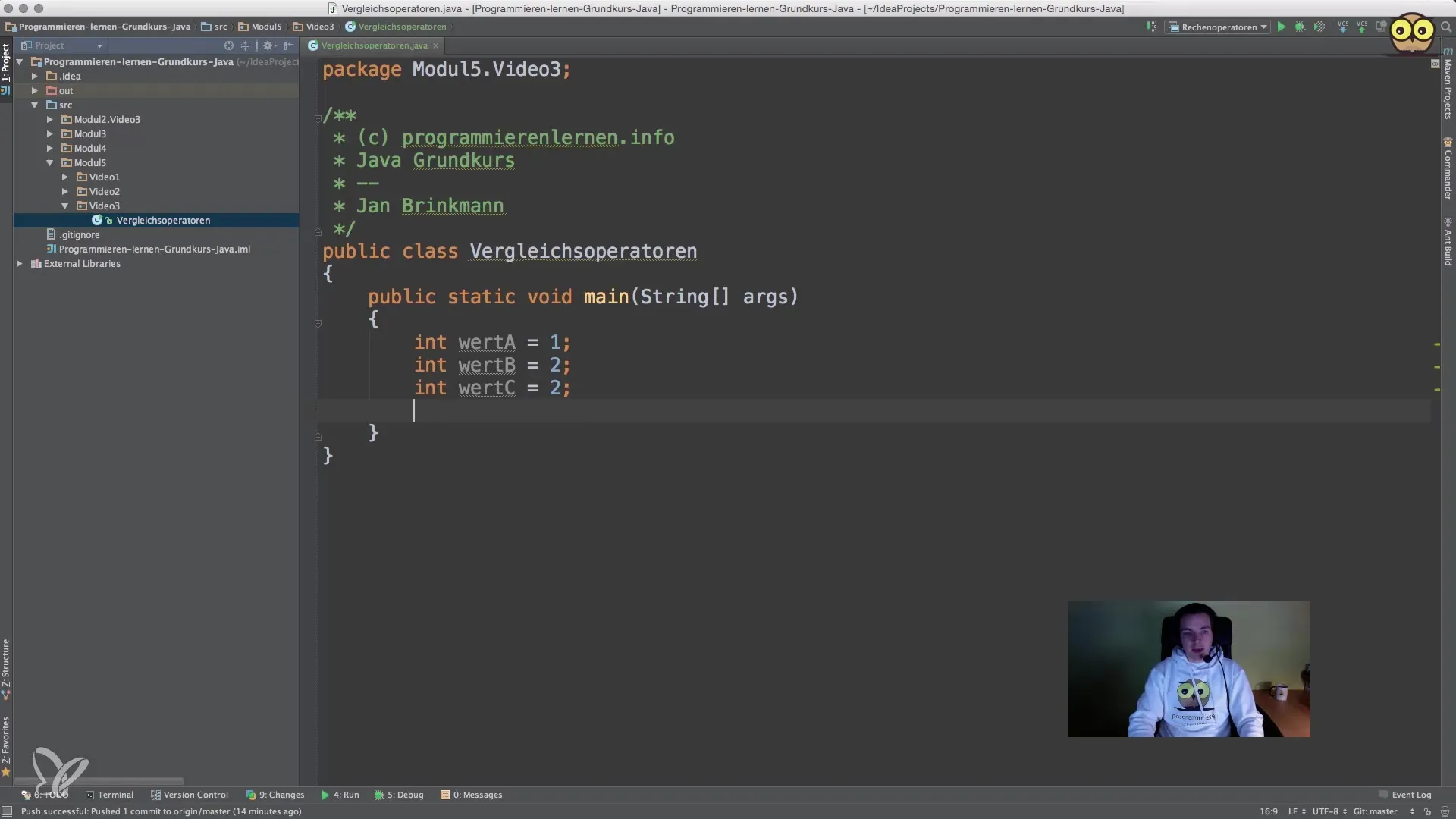
Step 3: Getting to Know Comparison Operators
Now it's time to learn about the comparison operators. The basic operators include:
- less than (<)
- greater than (>)
- less than or equal (<=)
- greater than or equal (>=)
- equal (==)
- not equal (!=)
Write these operators in the form of a comment in your code.
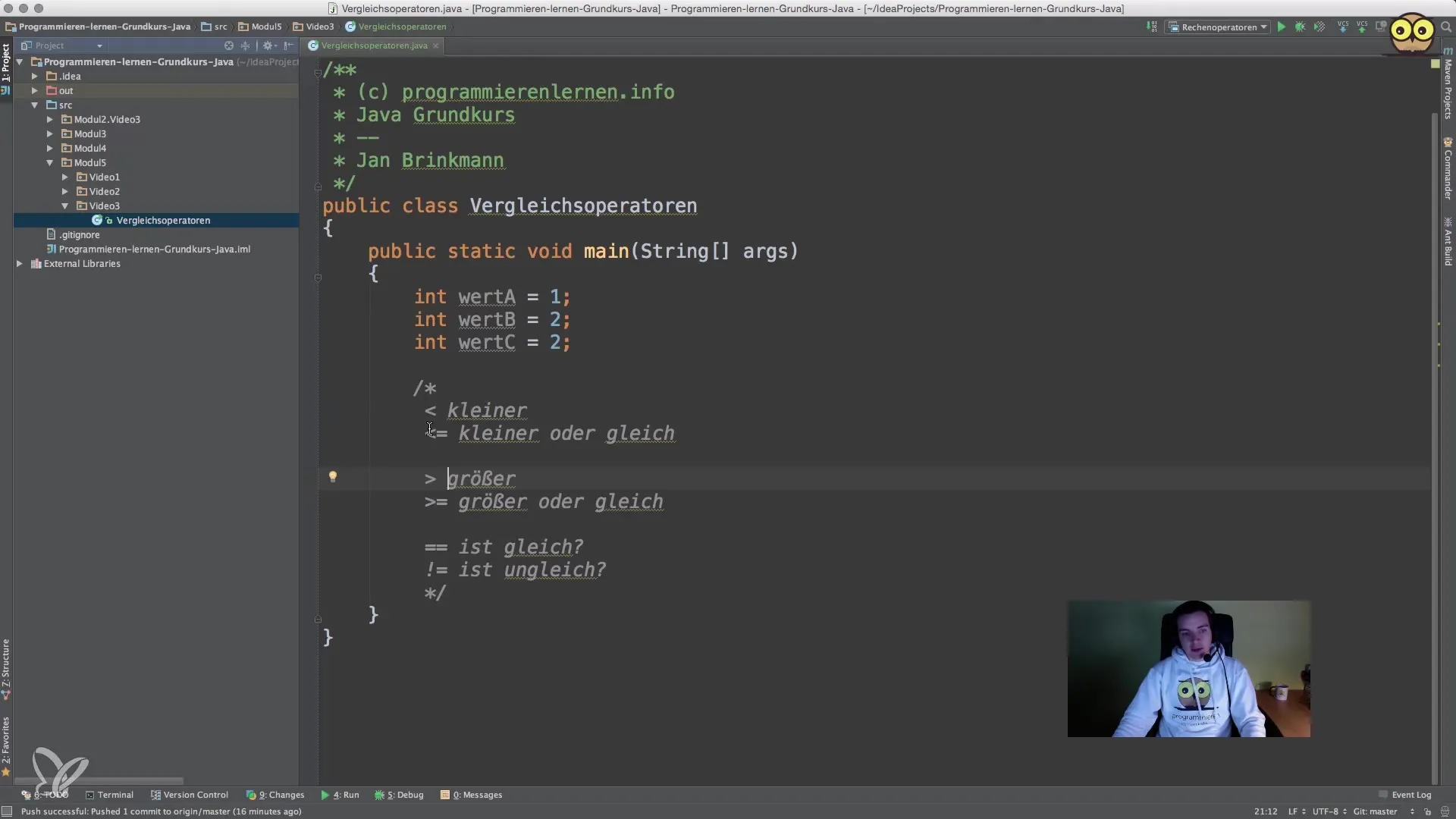
Step 4: Using the if Condition
Now that you know the comparison operators, you can use them in an if condition. Start with a simple comparison to check if valueA is less than valueB.
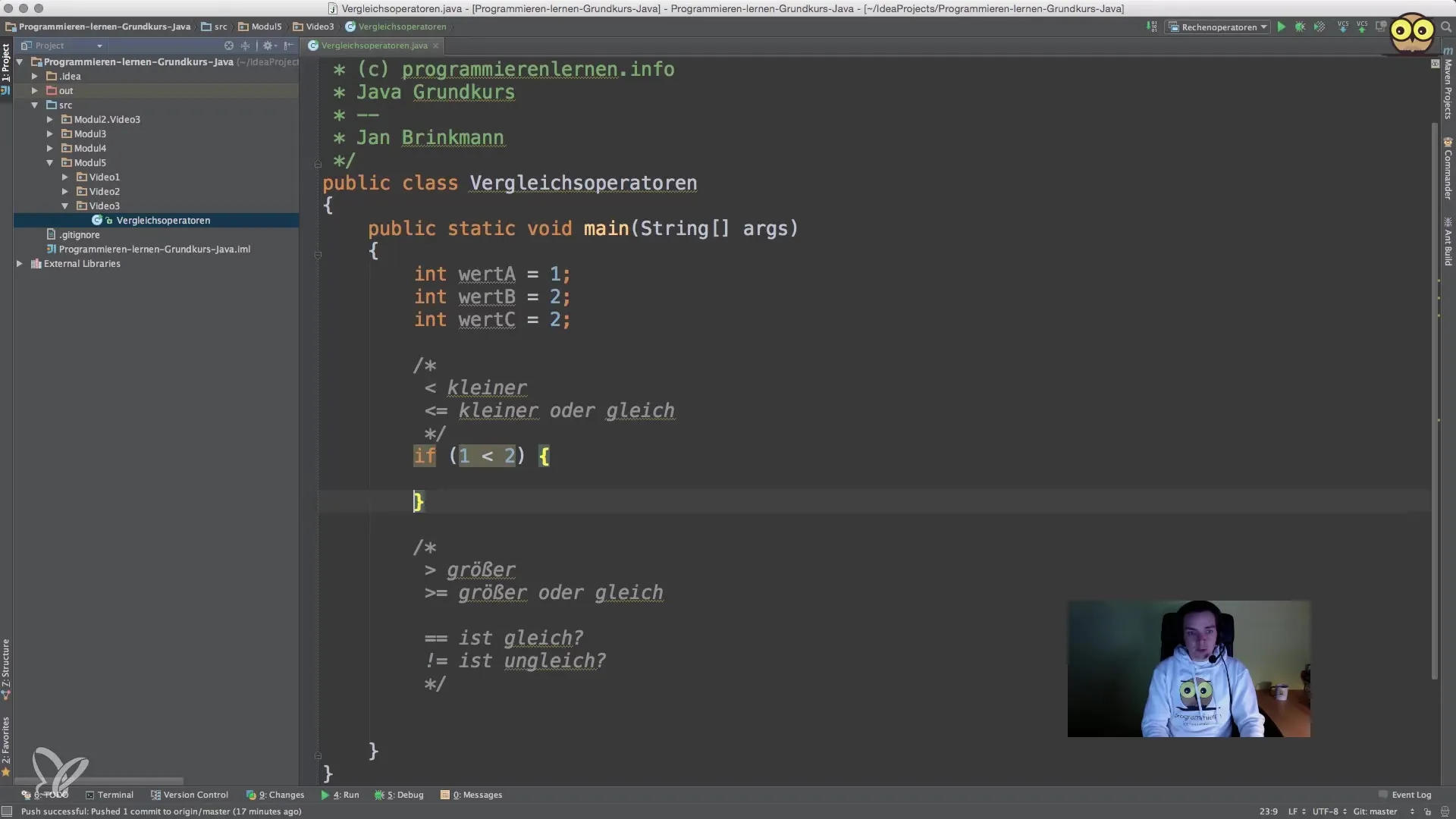
Step 5: Executing the Code
Add a code block inside the if condition to output the result. For example, you can include a print command that indicates the condition is true (System.out.println("Reached here");).
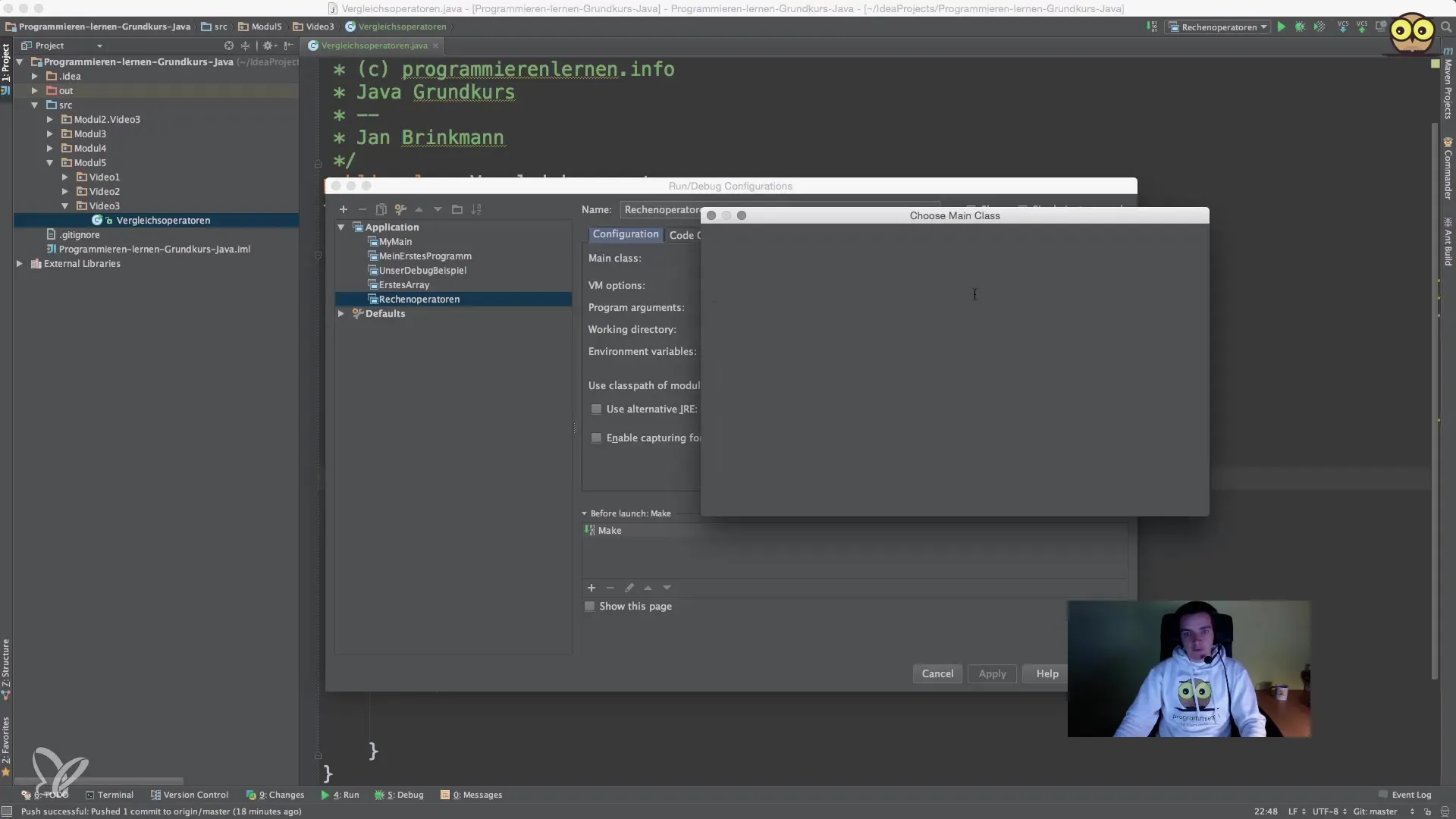
Step 6: Testing the Comparisons
To test the condition checks, you can change the variable values and see if the if condition works correctly. In an example where valueA is set to 1 and valueB to 2, the condition will be true, so the code inside the if condition will execute.
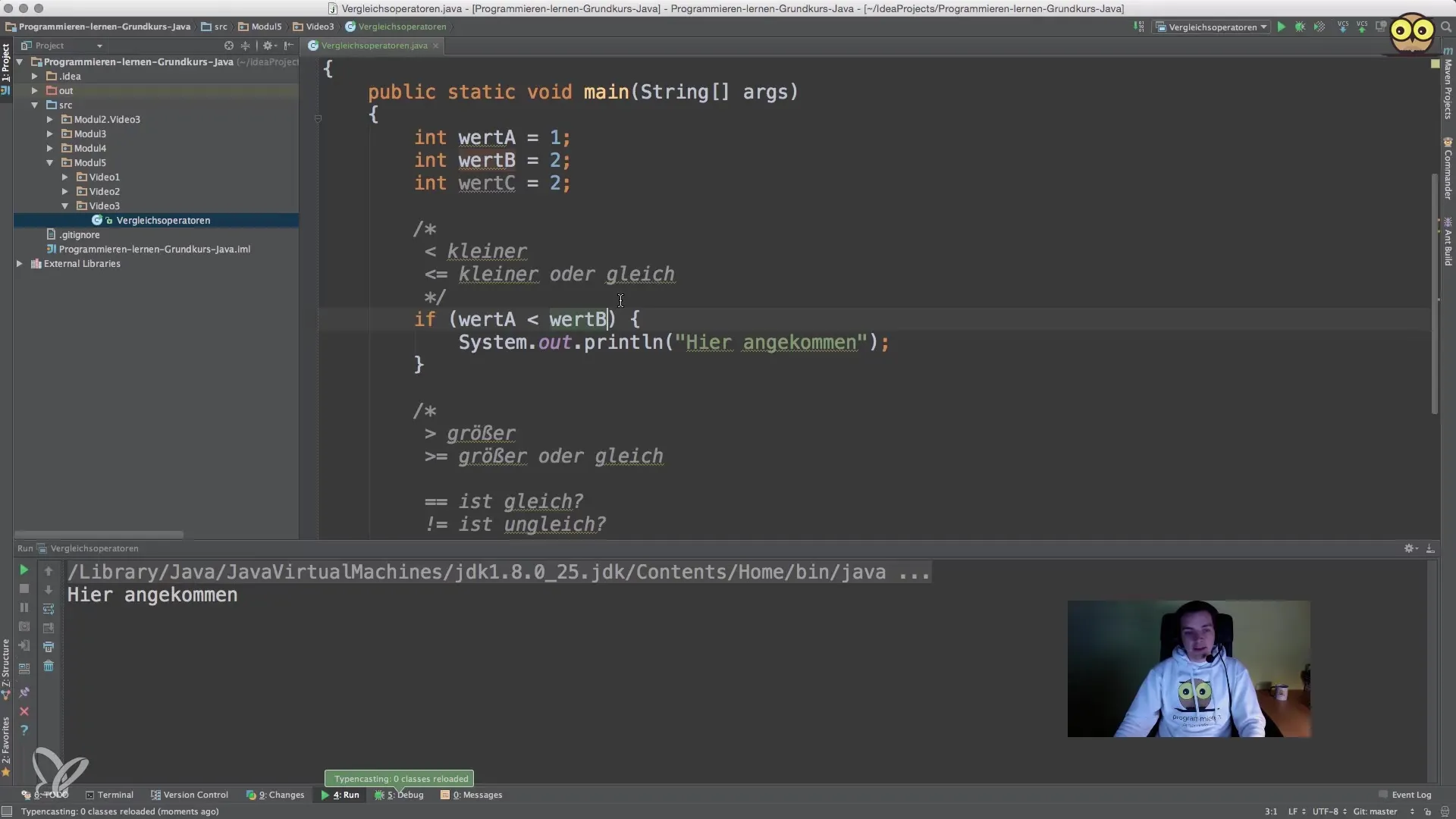
Step 7: Greater or Equal
Now extend your code with another comparison that checks if valueB is greater than or equal to valueC. You can check this with the operator >=. Again, add a print command to see the output.
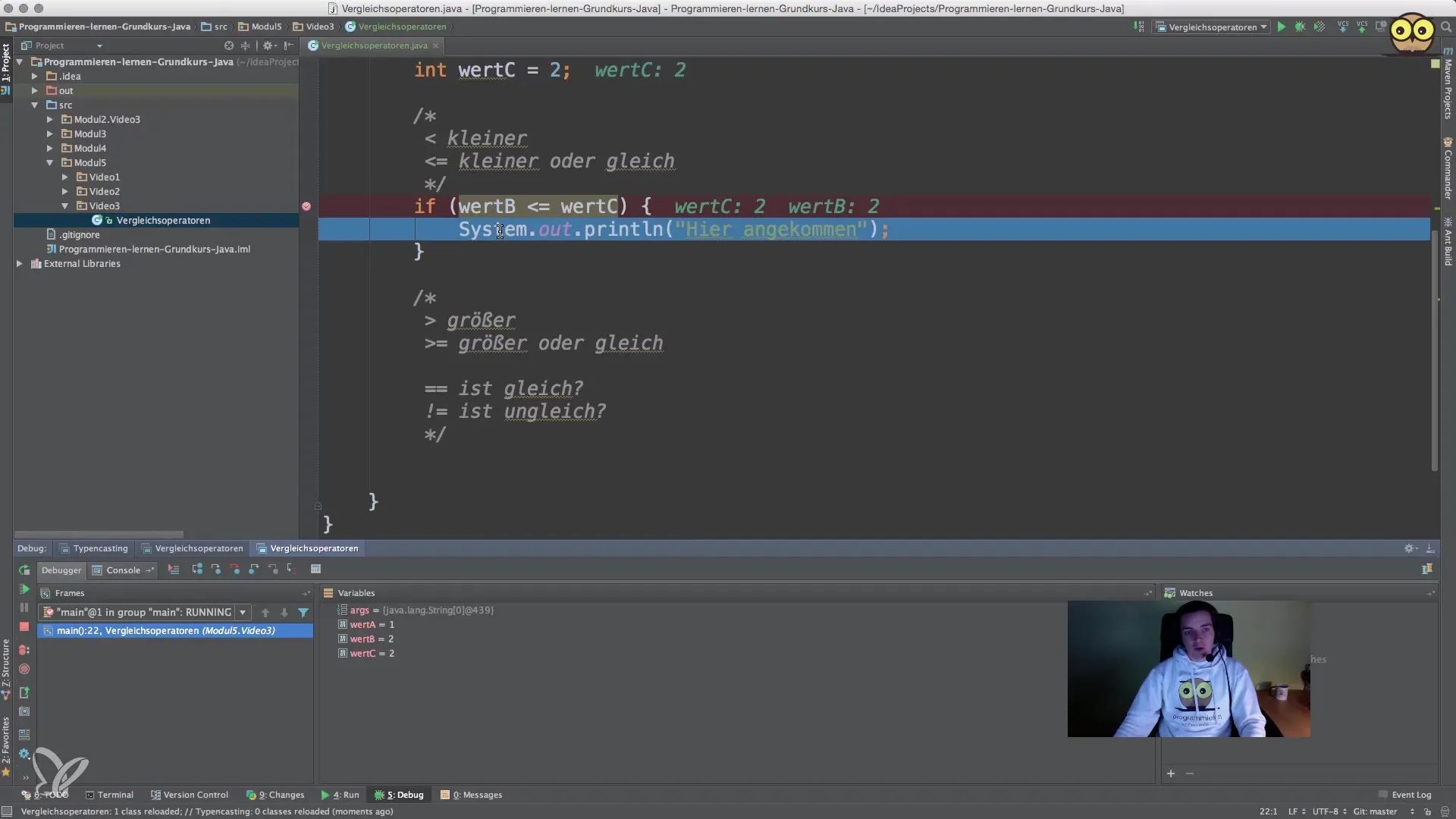
Step 8: Checking Equality
Next, check the equality between valueB and valueC with the comparison operator ==. If both values are equal, an appropriate message should be displayed.
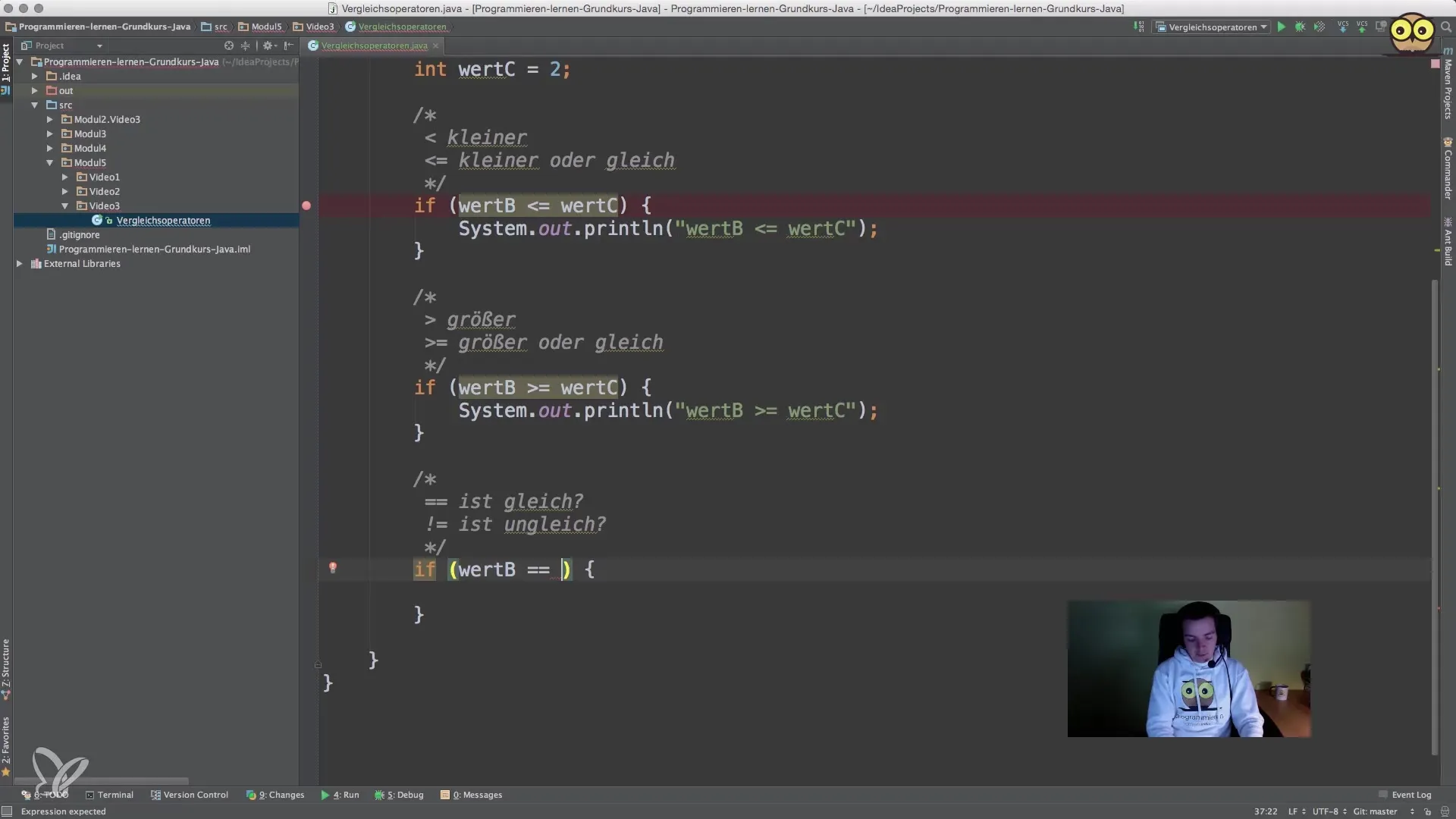
Step 9: Testing Inequality
Finally, you want to use the not equal operator!= to check if valueB is not equal to valueC. Since this condition is not met, you should ensure that the code block does not execute.
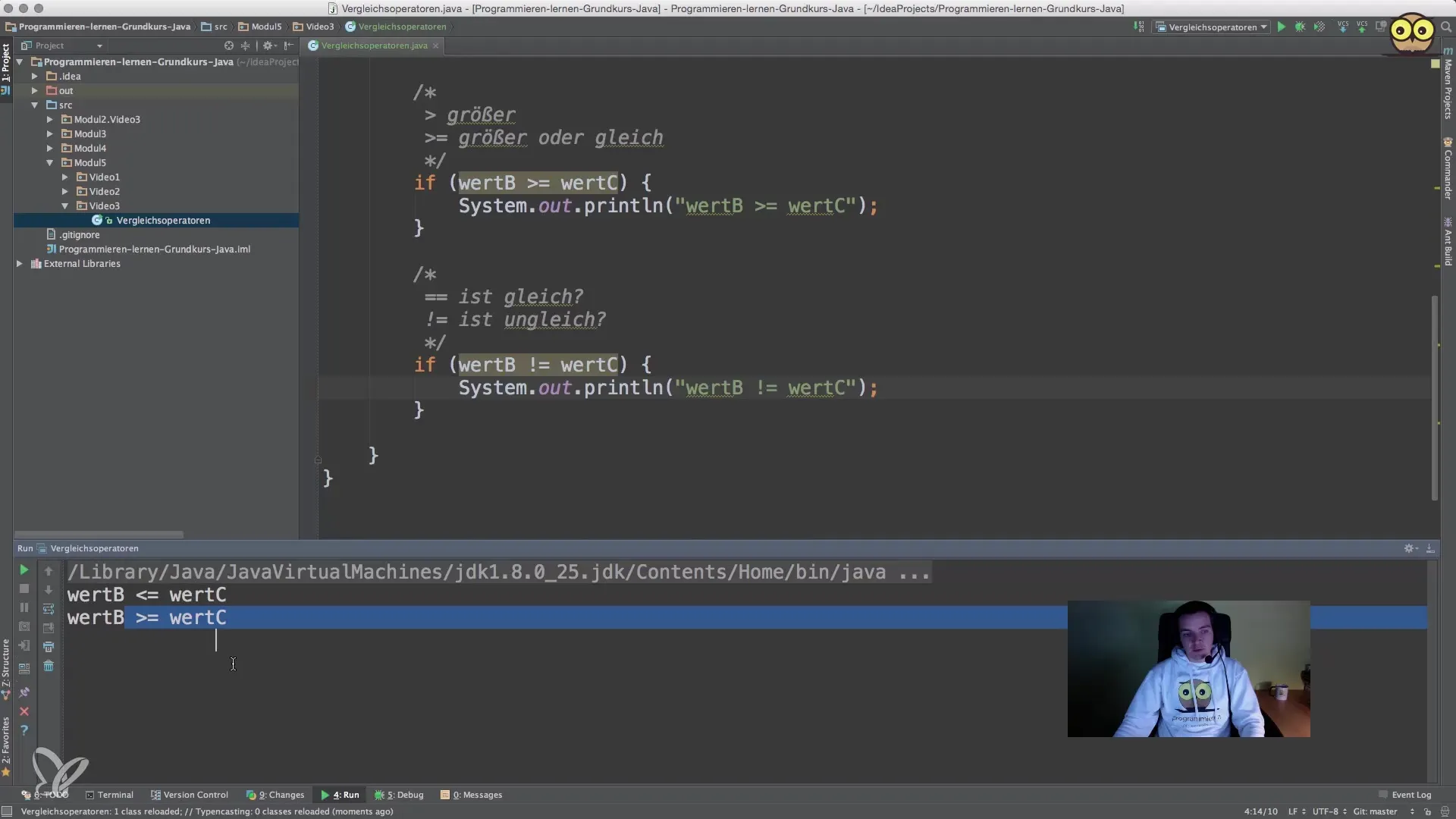
Step 10: Conclusion and Outlook
After understanding these operators and their expressions, you will be able to make informed decisions in your code and implement more complex logic. In the next module, we will focus on logical operators and their connections.
Summary - Comparison Operators in Java: A Beginner's Guide
In this guide, you have learned the basic comparison operators in Java and how to apply them in conditions. These operators are a central tool for all programmers to make logical decisions in their programs.
Frequently Asked Questions
What are comparison operators in Java?Comparison operators are symbols used to compare two values and provide a boolean response (true or false).
How many comparison operators are there in Java?There are six main comparison operators: <, >, <=, >=, ==, and!=.
How do I use an if condition with comparison operators?You can formulate an if condition with a comparison operator by placing the operator within the parentheses after if, followed by a code block.
When do I need comparison operators?Comparison operators are used to check conditions in your code, which is crucial for controlling the program flow.


